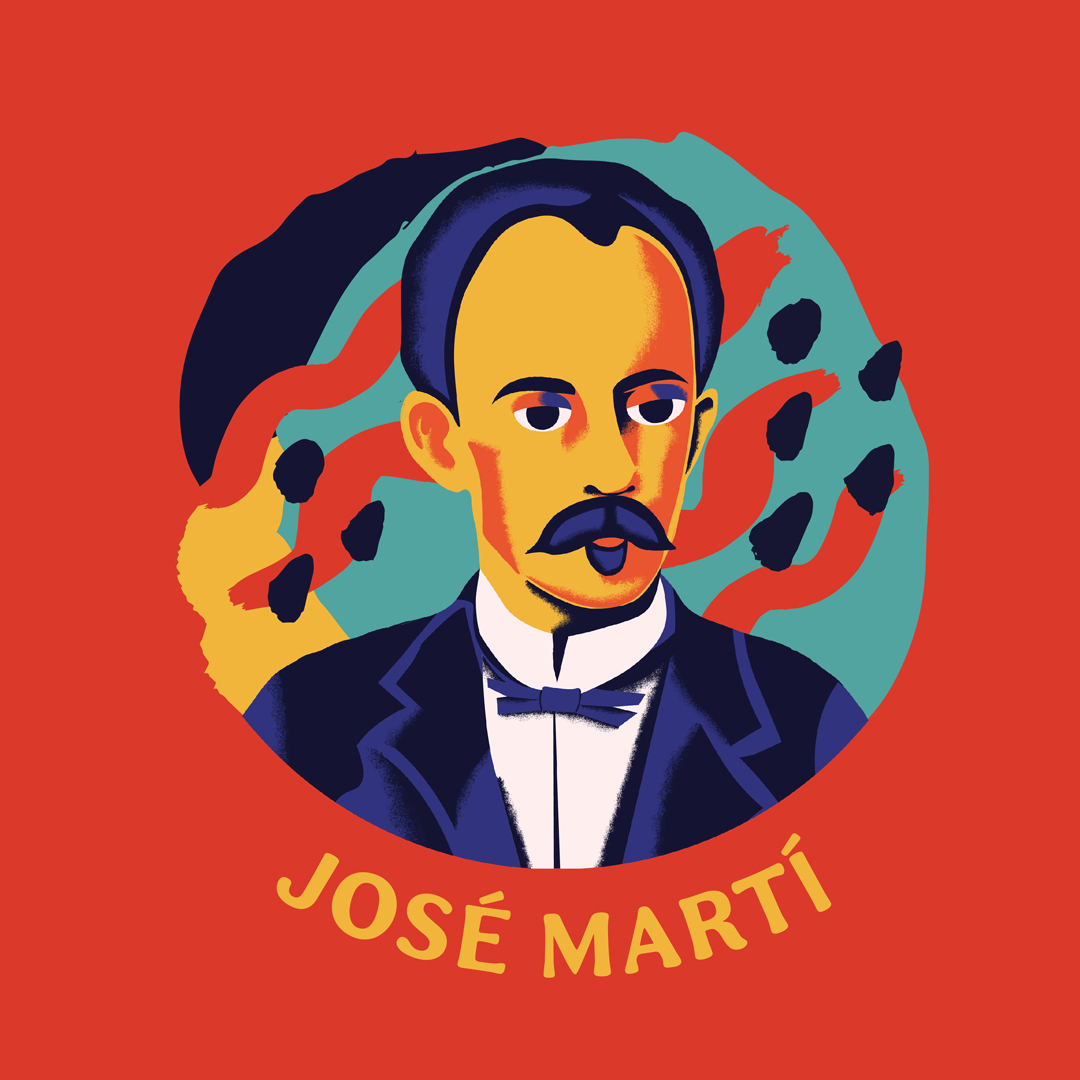José Martí is commonly thought of as the patron saint of Cuba. He is almost a deity, the most universally beloved and revered figure in the island’s post-colonial history.* A teacher, journalist, poet, philosopher, and revolutionary, Martí relentlessly co-conspired to free Cuba from Spanish rule. His death at the beginning of the Cuban War of Independence branded him as a martyr and inspired his countrymen to fight for their freedom.
Born in Havana in 1853, he came of age during the Ten Years War, Cuba’s first attempt to rid themselves of Spanish sovereign rule. At 16, he was already a promising writer, academic, and staunch proponent of liberty for his island nation. During the conflict, he was incarcerated, sentenced to hard labor, and eventually deported to Spain.
“Saber leer es saber andar. Saber escribir es saber ascender”
Knowing how to read is knowing how to walk. Knowing how to write is knowing how to fly.
After attending university and continuing his writing career, Marti moved to Mexico, where he met his wife and later spent time teaching in Guatemala. He made attempts to return to Cuba, but after having a request to practice law denied, he eventually left for the United States. During that time, he worked as a journalist (even founding newspapers and magazines himself), professor, and writer. He taught Afro-Cuban exiles how to read and write, earning the nickname “El Maestro,” and was considered a renewer of Spanish poetry. Martí is renowned as one of the most important writers of the 19th century.
As he spent more time in the United States, he connected with the community of Cuban exiles. While making plans for the Cuban War of Independence, he eventually tapped into this network to raise money for the war effort and sent weapons to Cuba. In 1892 he was elected “delegate” of the Partido Revolucionario Cubano. As a writer and philosopher, he managed to bring together various factions of rebels Including Antonio Maceo and Máximo Gomez, who were leaders during the Ten Years War, forming a unified alliance against Spanish occupation.
No hay hombre sin Patria, ni Patria sin libertad”
There is no man without his country, nor a country without liberty
On April 11, 1895, Marti, Gomez, and others landed in Cuba and met with the Cuban rebels lead by Maceo. It soon became clear while he was an excellent communicator and strategist, Marti was not a soldier. One month later, on May 19, he was killed during the Battle of Dos Rios.
According to scholars, when he galloped on horseback in Dos Rios it was “basically suicide.” Some note that it was “the best possible death for him,” not because he longed for death, but rather he would have chosen to die on the battlefield in pursuit of liberty. In his poetry he deems dying in the light of the sun as the death of a good man.
My great-grandmother’s personal favorite:
“Ser culto para ser libre.”
Be educated to be free
While he was only 42 at the time of his death, Martí left behind an incredible legacy as a politician, journalist, and writer, shaping Cuba’s liberation not only through his ideology, but also his martyrdom. The start of the Cuban War of Independence failed to appeal to the common man as it was organized by the intellectual elite rather than the masses, but Martí’s death provided a source of inspiration that permeated the rest of Cuban culture, as well as much of Latin-America and the subsequent migrants of the Cuban diaspora.
Cuba’s signature song, “Guantanamera,” draws its best known lyrics (there are many versions of it, as folk songs lend themselves to adlibbing the verses) from one of Martí’s poetry collections, Versos Sencillos or “Simple Verses.” The excerpted stanzas are highlighted below (with fairly literal translations by yours truly).
I:1
Yo soy un hombre sincero
De donde crece la palma,
Y antes de morirme quiero
Echar mis versos del alma.
I am an honest man
From where the palm grows,
And before I die I want to
Throw my verses from my soul.
V:3
Mi verso es de un verde claro
Y de un carmín encendido:
Mi verso es un ciervo herido
Que busca en el monte amparo.
My verse is of a soft green
And of a flaming carmine:
My verse is of a wounded deer
That searches for shelter in the hills.
XXXIX:1
Cultivo una rosa blanca
En julio como en enero,
Para el amigo sincero
Que me da su mano franca.
I cultivate a white rose
In July just as in January,
For the honest friend
That gives me their open hand.
III:2
Con los pobres de la tierra
Quiero yo mi suerte echar:
El arroyo de la sierra
Me complace más que el mar.
To the earth’s poor
I’d like to cast my luck:
The streams of the mountains
Please me more than the sea.=
*Meanwhile, the most revered indigenous (or pre-colonial) figure would be Hatuey, a Taino chief who led the first fighters against the Spaniards and was burned at the stake. He is known as Cuba’s First National Hero. The most generally beloved and revered figure might be Fidel Castro or Che Guevara, but the love is very much not universal, especially among Cuban-Americans.
Note: Parts of this article without linked citations take their evidence from The Cuba Libre Story: Episode 1 Breaking Chains
About the author.
Alessandra is the mentor, educator, and writer behind Boneseed, a private practice devoted to deep self-inquiry through a range of physical, energetic, and mental modalities. She has over 500 hours of yoga, mentorship, and facilitation training and can be found slinging knowledge on her website, newsletter, and @bone.seed.



